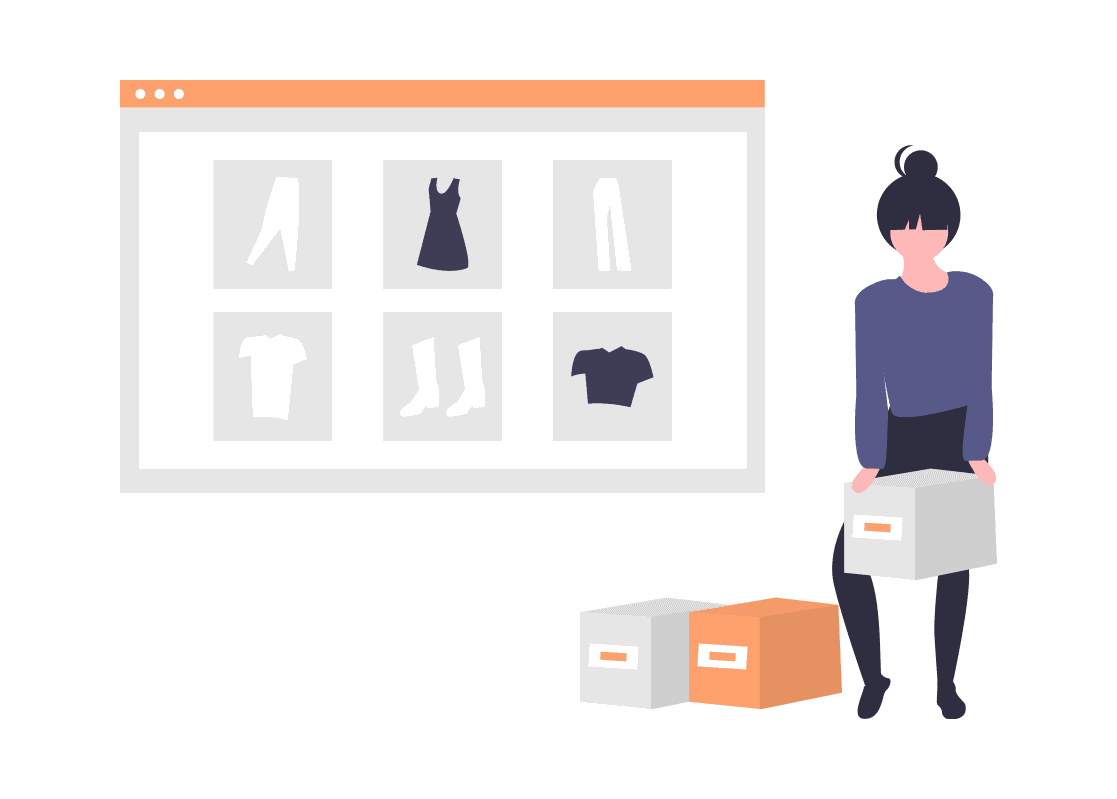With the outbreak of COVID-19 and the resulting extensive lockdowns in many cities around the world, we see an ever-increasing trench of retailers rushing to go online, i.e. turning to e-Commerce. e-Commerce has been around for a long time, but in 2020, as a result of the circumstances, we have witnessed industries that were traditionally against the trend of e-Commerce embracing it. In this article, we will compare the ways you can sell your items online, and which platform may work best for your business.
3 Ways You Can Sell Items Online
It is important to note that there are 3 main ways you can sell items online:
1. Use an existing e-Commerce marketplace platform
Such examples are Amazon, Qoo10, Lazada, Shopee, amongst many others. In this case, you do not own an e-Commerce per se, but you will have an ‘eShop’ in the form of your own shop page in the platform’s ecosystem. There can be many benefits, such as:
- an enterprise-grade server, which eliminates worry about downtimes, server speeds or SEO etc.
- an extensive pool of users who already regularly visit these marketplaces to search for products.
- users who were searching for other products or your competitors and found you.
However, there are cons to using an existing e-Commerce marketplace platform as well. You will be subjected to a rigorous onboarding process for most platforms. This includes having to go on talks/courses, or having to go through several rounds of screenings, on top of lots of paperwork. You may also lose out from the competition — while users may chance upon you when searching for other products or your competitors, the same goes for the other way round. Customers searching for your product will easily find others who are selling similar products at a cheaper price.
Additionally, you are subjected to harsh reviews. Managing customer relationships and ensuring you have good reviews will take up a majority of your time. Customers expect you to reply instantly, and you are likely to lose customers and even get negative reviews simply because you did not reply as promptly as desired by customers.
2. Use an existing e-Commerce solution platform
Such platforms are Shopify and Wix — amongst many others. In this case, you own your very own e-Commerce site.
3. Create your own e-Commerce shop
You can do this by using either Magento, Woocommerce, or Prestashop — amongst many other platforms, of course.
To put it simply, there are 2 main leading e-Commerce platforms online: Shopify and WooCommerce. Both of these online platform builders make it easy for anyone to build a business selling products and services of all kinds in a fast-growing global marketplace. However, while both WooCommerce and Shopify offer the essentials for creating a fully functioning online store, they work very differently. Your choice on what platform to use depends on your budget, your technical expertise and your site’s long term goals.
What Is WooCommerce?
WooCommerce is an open-source software through a free plugin that can be installed on any website built with WordPress, a free piece of software that comes with the source code for creating a basic site. To use WordPress, you’ll need your own domain name and an account with a web hosting provider, also known as “self-hosting,” since your site can be moved to any host you prefer. Once WordPress is installed on your host account, you can install the WooCommerce plugin, activate it and begin building your store.
WooCommerce services come with an array of essential tools for setting up an online store, with product pages, shopping carts, payment portals, and options for customizing your store’s general WordPress theme. One can also install WooCommerce-friendly free themes from the WordPress theme directory and a variety of online developers. If the core features of WooCommerce don’t provide all the functions you’re looking for, you can add more with a variety of extensions that can be purchased and installed into the basic WordPress plugin. One such example of an e-Commerce store built via WordPress and WooCommerce is MOKKOMOKKO, a modern furniture store in Singapore.
What Is Shopify?
With an array of essential features built into the platform, Shopify offers a “one-stop,” solution for setting up and running a fully functional store in a very short time, with no technical expertise required. Shopify is a hosted platform, which means that it provides users with a set of tools and templates that can be quickly customized and populated with products. Shopify handles the technical side of things, so for many users, setting up a shop on Shopify can be as simple as customizing one of more than 100 themes and adding your products or services. Shopify features also includes integration with popular social media and online marketplace sites, so that visitors can make purchases directly from those sites.
Because Shopify is a fully hosted provider, users have to work within the framework of the themes and tools the site provides. Shop owners don’t have access to their site’s source code and it’s not possible to add more functions with themes and plugins, but Shopify provides robust customer support and many built-in features WooCommerce can only offer through extensions. With those general features in mind, here’s a closer look at how these platforms compare in terms of key features every store builder needs to consider.
What Should Every Basic e-Commerce Store Include?
There are simple necessities when it comes to creating your own e-Commerce store. Every online store builder needs to include the basic feature for running any kind of store, while also staying flexible enough to meet the needs of highly targeted markets. At a minimum, your online store needs essential retail tools, such as a way to display products, handle credit card payments & other payment methods, manage orders, and provide customer contact and support. You’ll also need a customizable storefront that represents your brand and the kinds of products and services you offer.
Your choice of an e-Commerce platform also depends on your plans for growing your business. Some online entrepreneurs may need just a small storefront to sell a limited number of products, while others may have bigger plans to grow the business into a larger enterprise that needs more online space and resources. With multiple components that can be mixed and matched to build a custom storefront, WooCommerce offers control and flexibility in a self-hosted WordPress site, but Shopify’s hosted, all-in-one store building solution and fixed fees can save time and money.
Conclusion
That being said, many businesses that have thrown themselves into e-Commerce during this period would have to pick between the two. Each platform has its own set of pros and cons, depending on the individual business’ needs. One thing is for sure though, that having a platform online will definitely make shopping easier as it is a way to reach out and for customers to order and purchase products.
While we are slowly emerging from the COVID-19 pandemic, it is still very important to note that being online definitely has its perks and that having an online presence should be something that most businesses strive for. If you are looking for some help with deciding on a platform that best fits your business’ needs, feel free to drop us a line for assistance. As experts in the e-Commerce field and WordPress developers ourselves, we are able to provide you with the advice and services you may require — whether your business is locally in Singapore or overseas.




